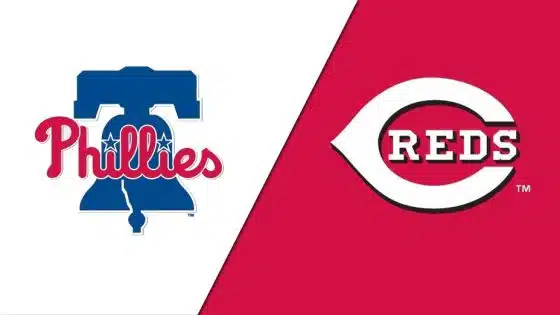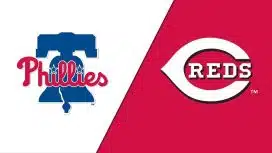Following up on yesterday’s blockbuster news of a lawsuit between the Phillies and the design firm Harrison/Erickson, Inc. (H/E) over who ultimately owns the rights to the Phillie Phanatic, here’s how things got where they are and how they most likely will pan out.
First, it’s important to take note of who is suing whom. Even though it’s H/E who is threatening to make the Phanatic a “free agent,” it’s the Phillies who have filed the suit seeking judicial recognition of their ownership rights to the Phanatic– a “declaratory judgment” asking the court to declare the Phillies the sole owners of the Phanatic so as to prevent H/E from acting on its threat. In essence, this is a peremptory move on the Phillies’ part to prevent H/E from suing the Phillies later on.
Interestingly, the Phillies filed this lawsuit in the 2nd Circuit (encompassing New York) rather than the 3rd Circuit (encompassing Philadelphia). This might be because H/E operates out of Brooklyn but it might also be because the 2nd Circuit has a reputation of being less copyright-friendly than the 3rd circuit. And it will be the determination of whether H/E's copyright on the Phanatic is valid that would decide the case should it ever be fully litigated. Most likely both factors played into the Phillies' decision to file in New York.
With regard to the merits of the case, things begin to get a bit murkier, although it appears as if the Phillies have the upper hand here, absent some new information provided by H/E’s attorneys if and when they file their answer to the Phillies’ complaint. “If and when” are important caveats here because of the likelihood that the parties reach some sort of agreement prior to this happening. If they don’t, H/E’s answer should be an interesting read.
Without delving too deeply into the weeds, the controversy involves the application of Title 17, section 203 of the U.S. Copyright Act, which states, in relevant part: “Termination of the [copyright] grant may be effected at any time during a period of five years beginning at the end of thirty-five years from the date of execution of the grant…” H/E contends that it owns the copyright of the Phanatic and that its assignment of its copyright to the Phillies in 1984 expires this year. In fact, H/E did register the copyright with the United States Copyright Office on May 4, 1979. So far, so good. But here’s where the weeds get thick.
In fact, they become nearly impenetrable due to of the photograph of the Phanatic H/E appended to its application for copyright protection. The photograph was not merely of the outfit, which H/E claimed to have designed, but of the outfit as worn. In short, rather than simply present the materials it designed in its application, H/E presented a combination of its materials and the animating effect of the materials, thus blending the work product of H/E and the work product of the Phillies, who employed Dave Raymond to animate the costume (it’s unclear if Raymond is the individual inside the costume photograph attached to H/E’s copyright application).
Further, because (the Phillies allege) a “costume” could not be copyrighted in any case (at least back in 1979), H/E categorized the Phanatic instead as an “artistic sculpture,” which was subject to copyright, describing the Phanatic in the application as “a shaggy creature wearing tennis shoes, tights, & a baseball shirt while carrying pennant.” The problem with the categorization of the Phanatic as an “artistic sculpture” (at least according to the Phillies) is that there was legal precedent holding that, generally speaking, a sculpture “implies a relatively firm form representing a particular concept.” The Phanatic, however, is not a firm form and is merely a pile of fabric that measures a few inches high until a human being puts it on, when it grows to over six feet in height and several feet in diameter. Accordingly, at least so claim the Phillies, H/E obtained its copyright fraudulently and, as such, have no rights to assert it over them.
In fact, the issue of whether a costume can in fact be subject to copyright is complex — more complex than the Phillies allege it to be. Just yesterday the 3rd Circuit handed down a decision in a case involving a Rastafarian banana costume that held that indeed a costume could be subject to copyright. And the Supreme Court in 2017 has likewise suggested that the issue isn't as cut-and-dried as the Phillies complaint makes it out to be.
However, in 1979 and in the 2nd Circuit (where, remember, the Phillies have chosen to file their lawsuit), the issue seemed to be a bit more clear. The prevailing law at that time in that circuit held that costumes were not subject to copyright. The Phillies allege that H/E was aware of this and committed a fraud upon the copyright office when it took pains to present the Phanatic outfit as something other than what it was — a costume.
There are other issues to be sorted out as well. The Phillies claim that they helped to design the costume itself, with Bill Giles making specific recommendations regarding the costume/artistic sculpture. At one point during the design process, the Phillies’ complaint alleges that Giles rejected an early rendering of the Phanatic, insisting that it be fatter and have a larger nose. The Phillies also contributed some of the materials for the outfit, supplying the Phanatic’s cap, jersey and “other material” to the final product. As such, the Phillies allege that even if the Phanatic were an “artistic sculpture,” H/E could not be the sole copyright holder as the creation of the Phanatic was a joint venture.
In addition, there are trademark issues that further complicate the rights of H/E to the Phanatic. The Phillies have registered at least eight separate trademarks related to the Phanatic over the years, implicating the niceties of trademark law, of which the reader will mercifully be spared here. In short, H/E’s road to victory here would be difficult, although perhaps not impossible.
Villanova Law professor and intellectual property expert Michael Risch calls the dispute “a complex situation that will take some time to work out…. Copyright gives the original author the right to terminate an assignment after a certain number of years. But there are exceptions. If it’s a work made for hire, then the corporation is the initial owner, and there’s no assignment to terminate. If there was joint authorship (as the Phillies claim), then there’s nothing to terminate (or at the very least, there may be dueling ownership where each gets to use it). If there have been changes since the very first design, those won’t terminate, so the differences between the original and the current must be contemplated (this was a big issue in termination of Superman rights, as the original had no cape and couldn’t fly). And if there are trademark rights, then use of the copyright may be complicated to the extent that they confuse users into thinking the Phillies are involved. So, there’s a lot to think about here.”
In the end, Risch predicts that the two sides will reach a settlement rather than litigate further. There is simply too much for each side to lose to pursue this to the bitter end. From H/E’s perspective, fighting all the way to a verdict would be expensive and the facts, at least as the Phillies have put them forth in their complaint, don’t seem to be in H/E's favor. Rejecting a settlement now might leave H/E with nothing other than an enormous legal bill once the verdict has been rendered.
The Phils, as well, have a lot to lose here even if all the facts are as they allege (which they probably aren’t). The Phils not only have millions of dollars invested in the Phanatic, the character is in many ways the backbone of the organization’s identity. The Phillie Phanatic’s image dominates the club’s marketing, Citizen Bank Park, even the tickets (at least back when they had them). Players come and go but, since 1978, the Phanatic has been a Phillie for life. Or so we’ve all assumed. To take even a small chance that they may lose him by forcing this case to a verdict is too much of a chance for an organization that is well aware that the only Phillie perpetually immune to the boo birds is the Phanatic.
It’s in both parties’ interest to settle this dispute and settle it early. If they don’t, however, the progression of this litigation will be fascinating to follow.





